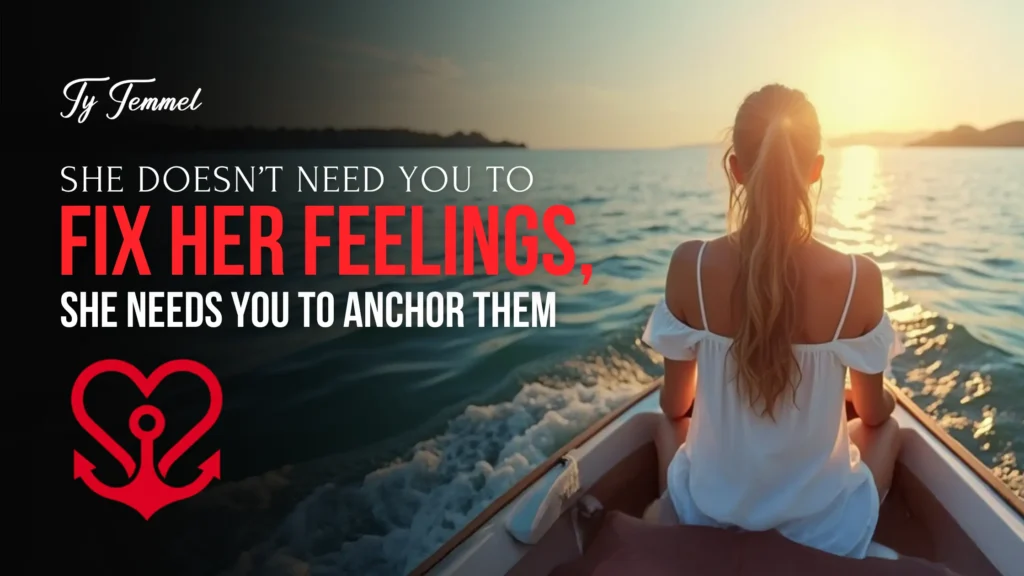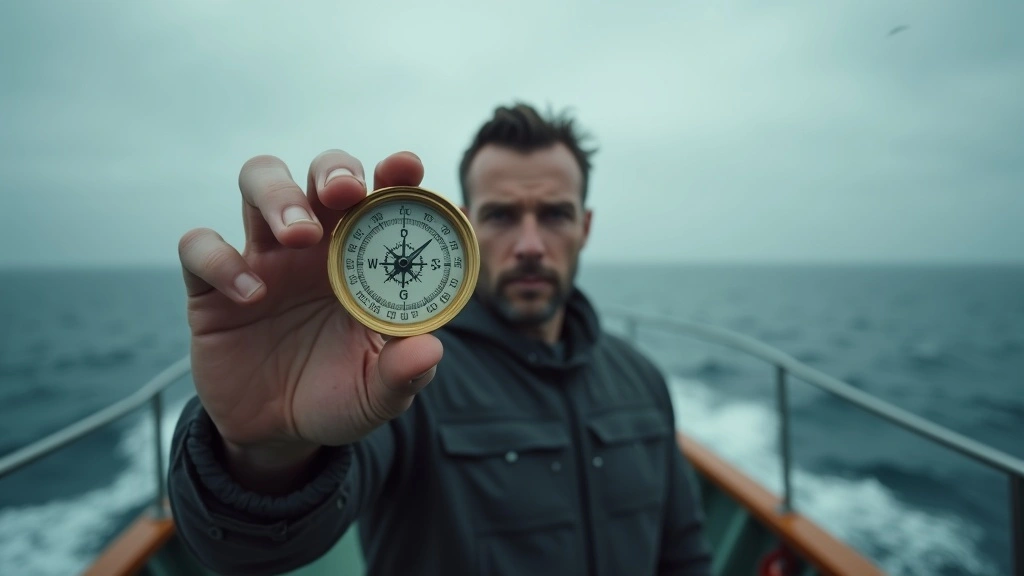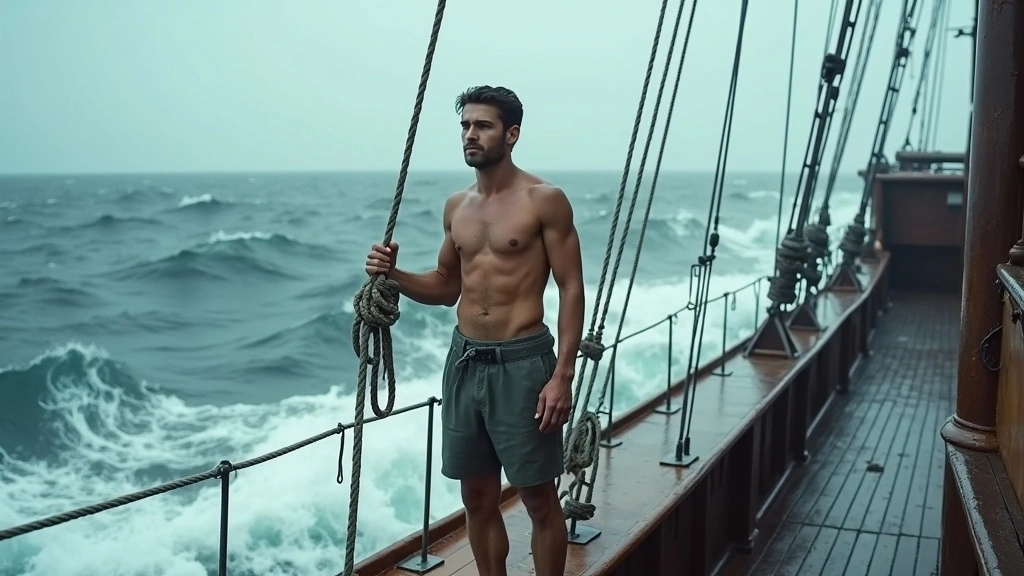
The Storm Most Men Don’t Understand
Most men believe they’re being helpful when they tell a woman to “calm down,” “relax,” or “stop overthinking.”
They think they’re steering the ship — but really, they’re capsizing it.
Because here’s the truth most men never learn:
Women aren’t choosing their emotional intensity. They’re experiencing it — like being in the middle of the ocean when a storm appears out of nowhere.
A woman’s emotions are not linear. They don’t move in straight lines like yours do. They swell, crash, and change direction without warning — not because she’s irrational, but because her inner world is vast, fluid, and deeply alive.
If a man doesn’t understand that, he’ll keep trying to fix the weather instead of learning to sail.

The Ocean Within Her
Imagine a woman as a sailor in open waters.
Some days, the sea is calm — the sunlight hits the waves just right, and everything feels effortless.
Other days, she’s caught in a storm she didn’t see coming. The sky darkens, the winds shift, and her emotions start tossing her in directions even she doesn’t fully understand.
In those moments, she’s not asking for a lecture.
She’s not looking for a solution.
She’s looking for stability — for the solid ground that only a man with emotional depth can provide.
Women have the ability to navigate their storms, but the ocean they sail is much more unpredictable than the one men experience. Their emotional tides are influenced by connection, intuition, hormones, memory, empathy — layers most men don’t even know exist.
So when she’s upset, she doesn’t need a map. She needs an anchor.

Men and the Compass
Men, by nature, tend to navigate their emotions with tools — logic, direction, reason.
They use a compass. When they feel lost, they look for coordinates: What caused this? How do I fix it? What’s the next step?
That’s masculine energy — forward motion, problem-solving, defining a path.
But when a woman is emotional, logic feels like cold wind against her storm.
You can’t chart her emotional weather on your compass. It’s not meant to be measured. It’s meant to be felt.
Emotional intelligence as a man means knowing when to use logic — and when to simply hold the frame steady while she navigates her waves

Why Logic Sinks the Ship
When you try to “fix” her emotions, here’s what happens:
She doesn’t feel understood — she feels unseen.
You’re speaking math to a poem.
You’re analyzing the storm instead of holding the mast.
Her emotions aren’t obstacles; they’re currents.
They move, shift, and carry messages from the deeper parts of her psyche. When you try to reason them away, you’re denying her humanity.
That’s why emotional anchoring matters so much — because love isn’t about silencing the sea. It’s about learning to float with her through it.

How to Be Her Anchor
Being her anchor doesn’t mean absorbing her chaos. It means being rooted enough not to get swept into it.
Here’s how:
– Stay grounded when she’s ungrounded.
When her emotions rise, don’t rise with them.
Slow your breath. Lower your voice. Keep your posture calm.
You’re teaching her nervous system that she’s safe to feel.
– Reflect, don’t react.
Instead of saying, “You’re overreacting,” say, “I can see this really matters to you.”
You’re not agreeing with the storm — you’re acknowledging that it’s real.
– Be the mirror, not the mechanic.
You don’t need to fix what’s broken. You just need to show her that it’s okay to feel broken for a moment without losing your love or presence.
– Hold space, don’t hold score.
When she’s emotional, that’s not the time to tally who’s right. The ocean doesn’t care who’s right — it just needs you to steer.
True masculinity isn’t dominance. It’s direction — guiding energy through chaos without losing your own center.

The Psychology of Emotional Anchoring
From a relationship psychology standpoint, this is called co-regulation.
When two people are emotionally connected, their nervous systems synchronize. If one person’s system is dysregulated (anxious, reactive, or overwhelmed), the other can bring balance by staying grounded and calm.
That’s why emotional stability is magnetic to women. It’s not about strength in the gym — it’s strength of presence.
When you remain calm in her storm, her body subconsciously feels:
“I can relax. He’s here. I’m safe.”
And that feeling — safety — is the foundation of trust, intimacy, and feminine surrender.
When she feels safe, she softens. When she softens, she opens. When she opens, love flows again.

What Women Are Really Saying
When she cries, withdraws, or lashes out, she’s not saying “fix this.”
She’s saying, “Can you still love me here?”
Can you still be her calm when she’s chaos?
Can you stay steady when the waves crash?
Can you listen without defending, hold her without judging, and stay while she finds her breath again?
That’s emotional leadership. That’s what separates a man from a boy.

The Stoic Lighthouse
Every ship needs a lighthouse — something steady, something unmoved by the storm, something that guides without demanding control.
As a man, you become that lighthouse by mastering your own emotional weather.
You can’t guide her storm if you’re still terrified of your own.
Do the work. Learn to sit in discomfort. Learn to breathe through frustration.
A man who can regulate himself becomes a sanctuary for others — especially the woman he loves.
Because love isn’t tested in the calm. It’s proven in the storm.

Conclusion: Don’t Fix Her, Feel Her
At the end of the day, she doesn’t want you to fix her feelings.
She wants you to anchor them — to be the place she can come home to when the waves get too high.
You don’t have to be perfect. You just have to be present.
Let her sea be wild. Let her wind be strong. Let her waves crash and calm.
Because when she looks across that ocean and sees you standing there — steady, grounded, and unshaken — that’s when she knows she’s safe to love you with everything she has.
Be her anchor.
Not her solution.
